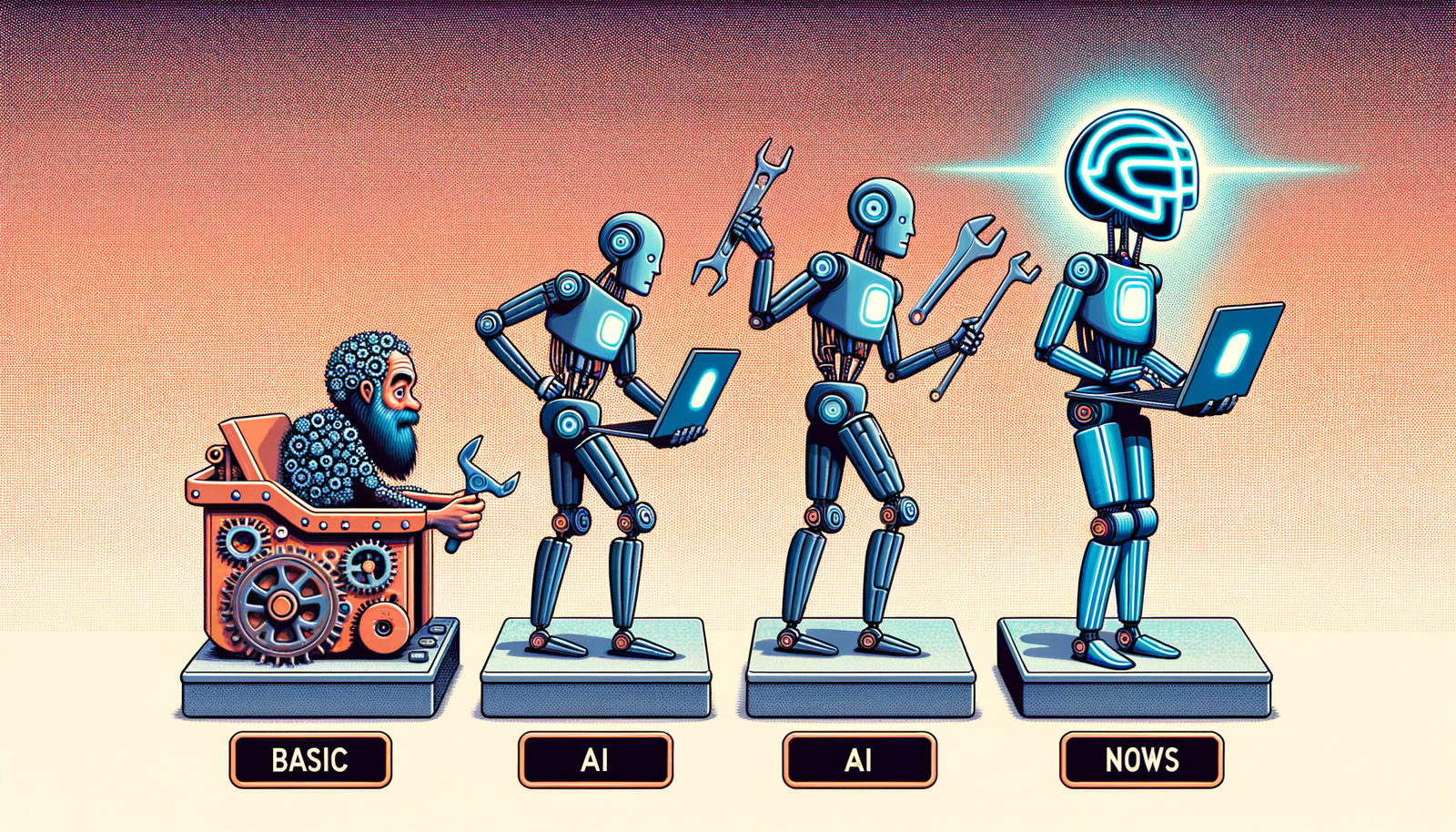Your Cart is Empty
Customer Testimonials
-
"Great customer service. The folks at Novedge were super helpful in navigating a somewhat complicated order including software upgrades and serial numbers in various stages of inactivity. They were friendly and helpful throughout the process.."
Ruben Ruckmark
"Quick & very helpful. We have been using Novedge for years and are very happy with their quick service when we need to make a purchase and excellent support resolving any issues."
Will Woodson
"Scott is the best. He reminds me about subscriptions dates, guides me in the correct direction for updates. He always responds promptly to me. He is literally the reason I continue to work with Novedge and will do so in the future."
Edward Mchugh
"Calvin Lok is “the man”. After my purchase of Sketchup 2021, he called me and provided step-by-step instructions to ease me through difficulties I was having with the setup of my new software."
Mike Borzage
Design Software History: The Evolution of AI Assistants in CAD Software: Transforming Design Processes and Enhancing Creativity
November 16, 2024 4 min read


Introduction
The integration of artificial intelligence (AI) into design software has fundamentally transformed the landscape of digital design. AI assistants have become indispensable tools that enhance efficiency, accuracy, and user-friendliness in design processes. From automating mundane tasks to providing intelligent design suggestions, AI is reshaping the way designers and engineers approach their work. The journey of AI in design software is a testament to technological advancement and innovation, reflecting a paradigm shift from traditional methods to intelligent systems that augment human capabilities.
Historical Context and Evolution
Before the advent of AI, the design software industry sought ways to automate and streamline workflows. Early tools like AutoCAD, developed by Autodesk in 1982, revolutionized computer-aided design by introducing digital drafting. AutoCAD's scripting capabilities allowed for basic automation, enabling users to write scripts in AutoLISP to automate repetitive tasks. This marked the beginning of automation in design software, laying the groundwork for more sophisticated technologies.
The introduction of early AI technologies in design software marked a significant leap forward. Companies like IBM and Autodesk spearheaded efforts to incorporate AI into their products. IBM’s Watson, initially known for its prowess in natural language processing and as a quiz show contestant on "Jeopardy!", began influencing various industries, including design. Autodesk, recognizing the potential of AI, invested in research and development to pioneer AI-driven features in their software suite. Their efforts led to the creation of tools that could learn from user behavior and improve over time, signaling the transition from simple automation to intelligent assistance.
Key milestones in the integration of AI into design software include the shift from rule-based systems to machine learning algorithms. Rule-based systems, which operated on predefined rules set by developers, were limited in adaptability. The advent of machine learning allowed software to analyze data patterns and improve functionality without explicit programming for every scenario. This evolution enabled design software to offer more personalized and efficient tools, adjusting to the unique needs of each user.
Current Applications and Technologies
Today, AI assistants are integral components of popular computer-aided design (CAD) software. Programs like Autodesk Fusion 360 and SolidWorks have incorporated AI features that significantly enhance the user experience. Autodesk Fusion 360 utilizes AI for generative design, allowing designers to input parameters and constraints, and then generating optimized design alternatives. SolidWorks incorporates AI for feature recognition and predictive modeling, streamlining the design process by anticipating user intentions.
AI assistants in these software applications enable a range of functionalities. Task automation reduces the time spent on repetitive actions, freeing designers to focus on creative problem-solving. Design suggestions powered by AI algorithms offer innovative solutions that may not be immediately apparent to the user. Error detection features analyze designs in real-time, identifying potential issues before they become problematic. This proactive approach to design ensures higher accuracy and efficiency.
The integration of AI has led to several benefits:
- Increased productivity: By automating routine tasks, designers can accomplish more in less time.
- Enhanced creativity: AI-generated suggestions inspire new ideas and approaches.
- Improved accuracy: Real-time error detection reduces mistakes and rework.
Future Trends and Challenges
Looking ahead, the future of AI assistants in CAD software promises even greater personalization and adaptability. As machine learning models continue to evolve, AI assistants will become more attuned to individual user preferences and workflows. Increased personalization means that AI can provide tailored suggestions and automate tasks specific to a user's habits, further streamlining the design process.
However, these advancements come with potential challenges and concerns. Ethical implications arise regarding the reliance on AI for critical design decisions. Ensuring that AI decisions are transparent and can be audited is essential to maintain trust. Data privacy is another significant concern; as AI assistants gather more user data to improve functionality, protecting this information becomes paramount. The reliability of AI decisions is also under scrutiny—designs generated or modified by AI must meet safety and regulatory standards, especially in industries like aerospace and automotive design.
The need for ongoing research and development is evident to address these challenges. Continuous innovation is required to improve AI algorithms, enhance data security, and develop ethical guidelines for AI use in design software. Collaboration between software developers, designers, and regulatory bodies will be crucial to ensure that AI integration is both effective and responsible.
Conclusion
In summary, AI assistants have had a transformative impact on design software, revolutionizing the way designers and engineers work. From the early days of basic automation with tools like AutoCAD's scripting features to the sophisticated AI-driven functionalities of today, the evolution has been remarkable. The integration of AI has enhanced efficiency, promoted innovation, and increased accuracy in the design process.
As we consider the possibilities that AI brings to design software, it is important to acknowledge the responsibilities that accompany these advancements. Ethical considerations, data privacy, and the reliability of AI decisions are critical factors that must be addressed. The future holds immense potential for AI assistants to further augment human creativity and productivity, but this must be balanced with thoughtful oversight.
Encouraging continued exploration and innovation in this evolving field is essential. By embracing AI while also addressing its challenges, the design software industry can continue to push boundaries and achieve new heights. The collaboration of technology and human ingenuity promises a future where design is not only more efficient but also more inspired and groundbreaking.
Also in Design News

Cinema 4D Tip: Lock Framing Early with Cinema 4D Safe Frames and Aspect Overlays
October 30, 2025 2 min read
Read More
ZBrush Tip: Conservative Projection Workflow for Artifact-Free Detail Transfer
October 30, 2025 2 min read
Read More
V-Ray Tip: Bake Static GI into Lightmaps for Real-Time Engines
October 30, 2025 2 min read
Read MoreSubscribe
Sign up to get the latest on sales, new releases and more …


